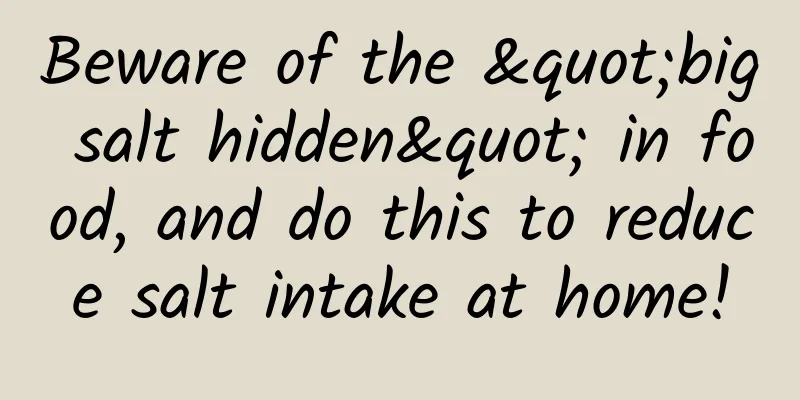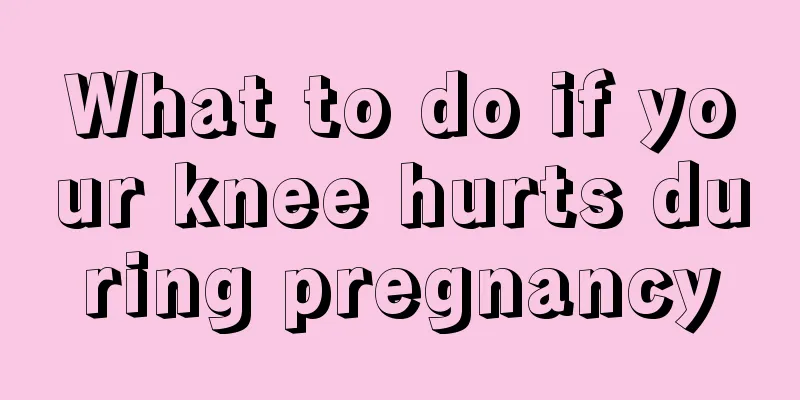Beware of the "big salt hidden" in food, and do this to reduce salt intake at home!

|
Editor's note: Many people think that food will be "tasteless" without salt. And delicious dishes will inevitably be "heavy". Salt, as the first of all flavors, has always been an important condiment in our lives and a component of many seasonings. However, high "salt" value, in addition to giving our taste buds a delicious enjoyment, will also bring some health troubles! According to the Beijing Center for Disease Control and Prevention, an important component of table salt is sodium chloride (NaCl), which is an essential nutrient for maintaining plasma volume, acid-base balance, nerve impulse conduction and normal cell function. However, excessive salt intake increases the risk of hypertension, while reducing salt intake can lower blood pressure levels. Excessive salt intake also increases the risk of chronic diseases such as heart disease, stroke, and gastric cancer. For children, excessive salt intake is also harmful, and the younger the age, the greater the harm. A high-salt diet increases the risk of cardiovascular disease, upper respiratory tract infection, and zinc deficiency in children. The World Health Organization recommends that adults consume less than 5 grams of salt per day, which helps reduce blood pressure and the risk of cardiovascular disease, stroke, and coronary heart disease. Beijing Center for Disease Control and Prevention reminds: Reduce salt intake in this way 1. Choose fresh ingredients to preserve the original flavor of the food Try to buy fresh ingredients and keep the natural flavor of the food as much as possible when cooking. There is no need to add too much salt and other condiments. Eat less foods such as pickles, processed cooked meats and canned foods. 2. Use the salt spoon correctly and control the amount of salt To estimate the amount, you can use a salt spoon. The specification of the salt spoon we usually use is 2 grams of salt per spoon. Note that it is a flat spoon, not a pointed one. Because other foods and condiments also contain salt, the amount of salt a person should consume in a day should be less than 3 spoons. 3. Use less salt when cooking, and add salt after cooking When cooking, try to use less salt, soy sauce, MSG, chicken essence, bean paste and other condiments with high salt content. When cooking, you can make more use of the freshness and fragrance of foods such as mushrooms, dried shrimps, and seaweed, and you can also use sour and sweet tastes instead of salty tastes. When cooking, add salt just before taking the dish out of the pan. This way the salt adheres to the surface of the ingredients, but not much salt is absorbed into the interior of the ingredients. The taste is salty enough, and reducing the amount of salt does not reduce the flavor. If necessary, cook children's food separately to help them develop the habit of light eating. 4. When dining out, take the initiative to ask for less salt Restaurant dishes are usually heavier in flavor than homemade dishes. Therefore, reducing the number of times you eat out and eat takeout, and choosing to eat at home as much as possible, is a good way to reduce salt. When you must eat out, you can actively ask for low-salt and low-oil dishes and actively choose low-salt dishes. 5. Beware of “hidden” salt Although some convenience foods and snacks do not taste salty, they contain a lot of invisible salt, such as instant noodles, noodles, nuts, bread, biscuits, ice cream, etc. It is recommended to read the nutritional label carefully when purchasing food and choose foods with low sodium content as much as possible. 6. When buying pre-packaged food, read the nutrition label carefully The sodium (Na) on the nutrition label of pre-packaged food indicates the salt content. When purchasing, be sure to choose foods with low sodium content as much as possible. |
<<: Why is homemade yogurt not sour (most likely there is something wrong with the bacteria)
>>: Here’s everything you want to know about the COVID-19 vaccine
Recommend
What should I do if my long-distance girlfriend has her period?
After entering puberty, men often look for girlfr...
Why does uterine cold occur?
Uterine cold troubles many young women. Many wome...
Will curettage lead to infertility?
Now we are very familiar with curettage, because ...
What medicine should women take for itchy urethra?
The female urethra and vagina are very close, and...
Irregular menstrual period with brown discharge
What should I do if my period is not clean and I ...
If you want to reduce adverse reactions when taking aspirin for a long time, what should you do?
Aspirin is the most classic antiplatelet drug, wh...
Can I shave my pubic hair while pregnant?
The most common one is shaving pubic hair. In add...
Is a woman's heart on the left or right?
Ordinary people cannot tell the difference betwee...
Exercises to correct retroverted uterus
Exercise is very common, and it is very helpful t...
Have you dyed your hair for the New Year? Here's what you need to know to avoid hair damage!
In order to welcome the arrival of the Spring Fes...
What to do if thyroid cancer has rare metastasis? Sichuan University of Surgery combines multiple disciplines to help with precision minimally invasive treatment
Recently, a multidisciplinary team from the Depar...
Can women still ovulate after menopause?
Women usually enter menopause between the ages of...
Thick thighs, thick waist, or thick neck, which one is really better?
In this era of pursuing slimness, people often av...









